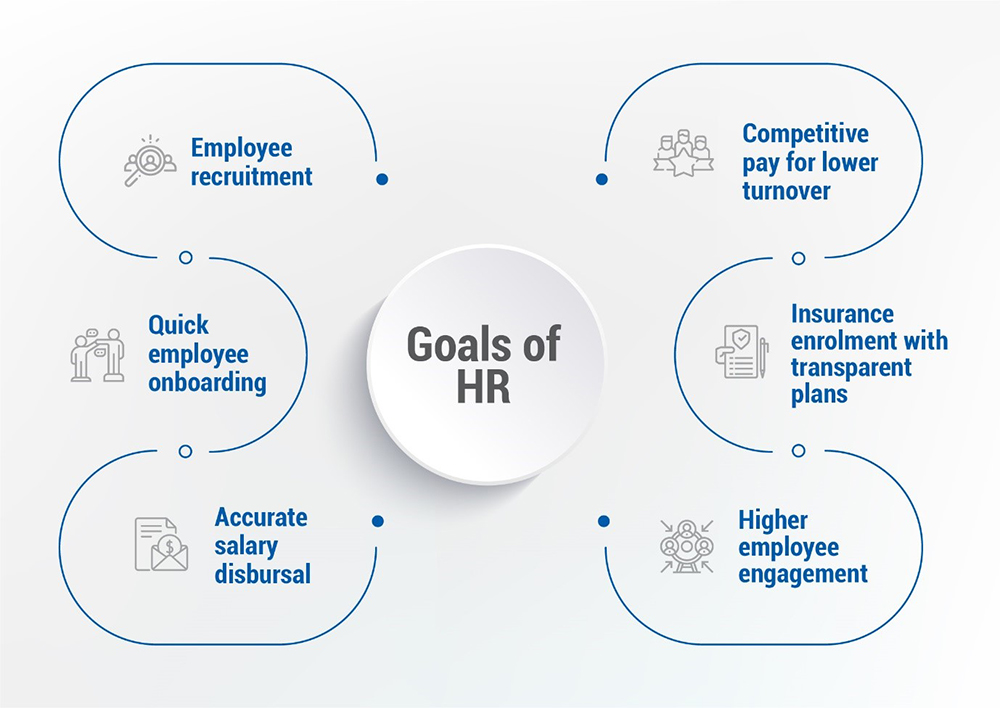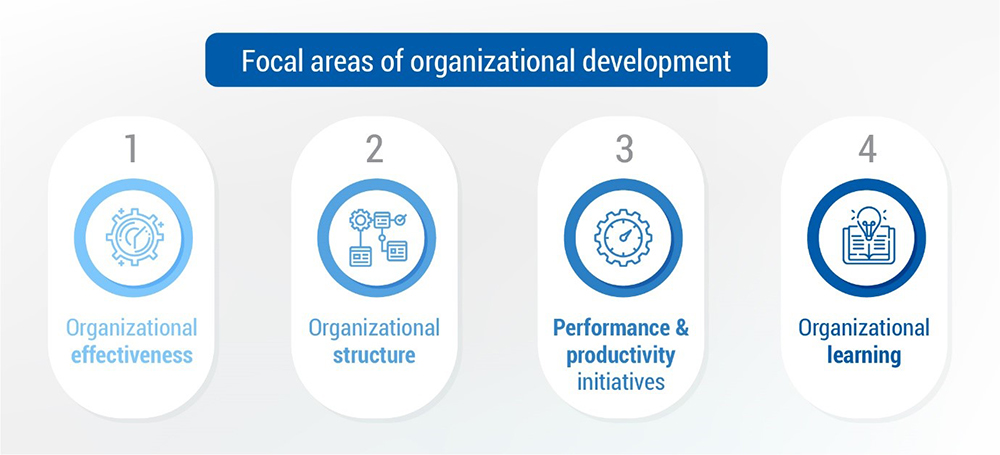
Possibly the department with which a professional interacts the most frequently in the course of work life, human resources is said to have originated in the early 20th century. Back then, the focus was from hiring to retiring, and on managing the administration and compliance therein i.e. the function was transactional.
Over time, though, HR has moved toward becoming a strategic partner to company leadership. With transactional and administrative aspects often being outsourced, HR now looks at contributing to the right strategies to attain organizational goals.
The chief aim of HR is hiring, growing, and managing the employee base of an organization. The bigger task is to achieve these goals with ease and efficiency, minimizing the strain therein. Here are the chief goals:

The way a company manages its employee processes could classify the latter within HR, organizational development, or both. Recruitment and compliance are, for instance, typical HR tasks, yet performance management – also an HR task – could well be a part of organizational development.
What is organizational development? With a noticeably shorter history, organizational development is rooted in behavioral science, psychology, and human and social values. When there is an issue, opportunity, or problem at the organization, an organizational development practitioner addresses the same as a process consultant.
According to most definitions of organizational development, it aims at bettering individuals and systems at organizations by leveraging behavioral science, targeting meaningful, purposeful change for the better. This is achieved primarily through assessments and interventions, where science-based processes generate facts and figures that are used to implement change in the organization. Trial-and-error is not the mantra here; instead, data and testing ensure the outcomes are on track as per the original goal or intent. From a single department or location to across the organization, organizational development can bring about great change.
Organizational development combines the business objectives of all other organizational functions. The principles are universal in their applicability – the size of the organization does not matter, nor does whether it is public, private, government, non-profit, or any other.
Strategic plans are critical to organizational development. They help to assess the difference between the existing and the desired landscape, which in turn lends focus to initiatives. When business objectives are clear, the associated actions become clear.
Here are the focal areas of organizational development:

Consider how human resource functions relate to organizational development. The distinction between the two seems obvious when comparing their traditional objectives. However, recent years have seen a noticeable shift in human resources and organizational development, such that HR practices now are focusing on goals originally ascribed to organizational development.
This shift is best captured by the term ‘strategic HR’. From an administrative function, HR is now transforming into a business partner offering not just transactional support but solutions and strategies for the business. In fact, organizational development departments are often being eschewed in favor of strategic HR teams.
Human resources and organizational development are closely related. HR professionals could merge the two functions to the benefit of the company. Organizational development professionals could fight to stick to the definition of organizational development and stay separate. However, the better course of action is to develop, promote, and teach the core principles of the discipline to all types of business professionals, making it a transferable skill. Rather than a separate business function for a few trained professionals, organizational development needs to become a distinct, recognizable business discipline that many professionals can use.
The goal has to be the improvement of the people side of the business. For this, HR professionals should put aside task segregation by tradition, appreciating and understanding the need to apply organizational development principles in situations when these would work better than regular HR tactics.

CredBadge™ is a proprietary, secure, digital badging platform that provides for seamless authentication and verification of credentials across digital media worldwide.
CredBadge™ powered credentials ensure that professionals can showcase and verify their qualifications and credentials across all digital platforms, and at any time, across the planet.

Please enter the License Number/Unique Credential Code of the certificant. Results will be displayed if the person holds an active credential from TMI.